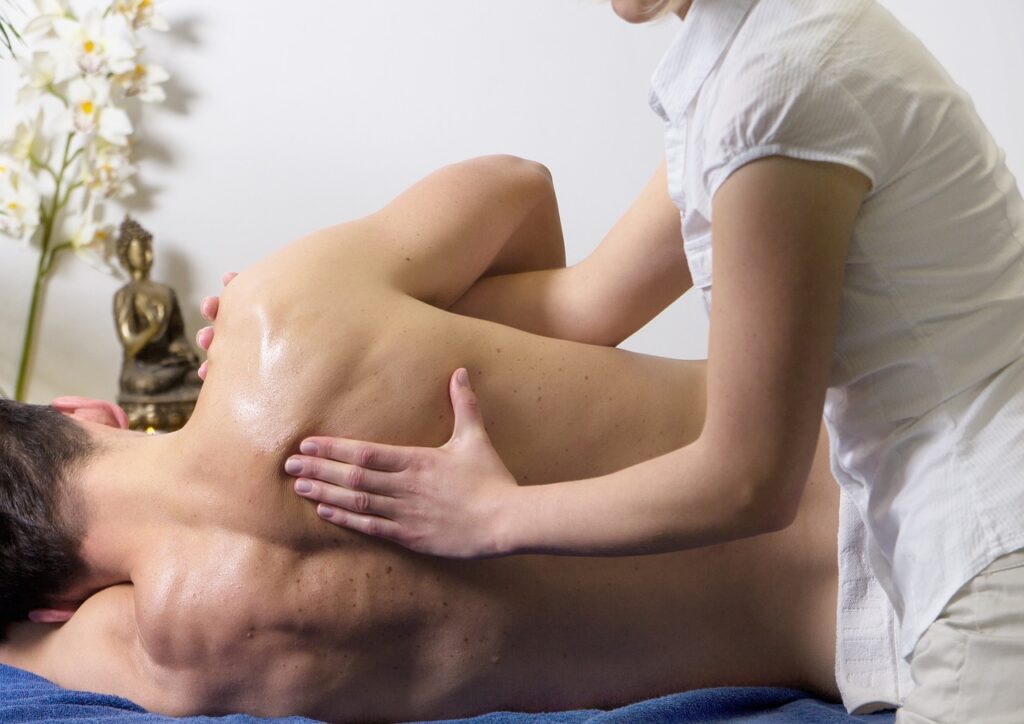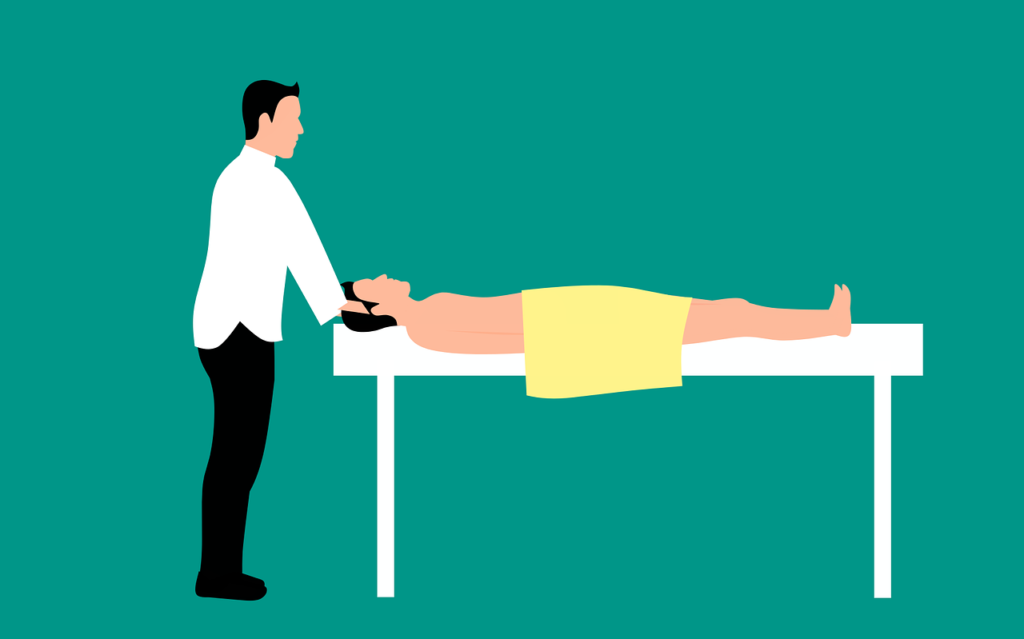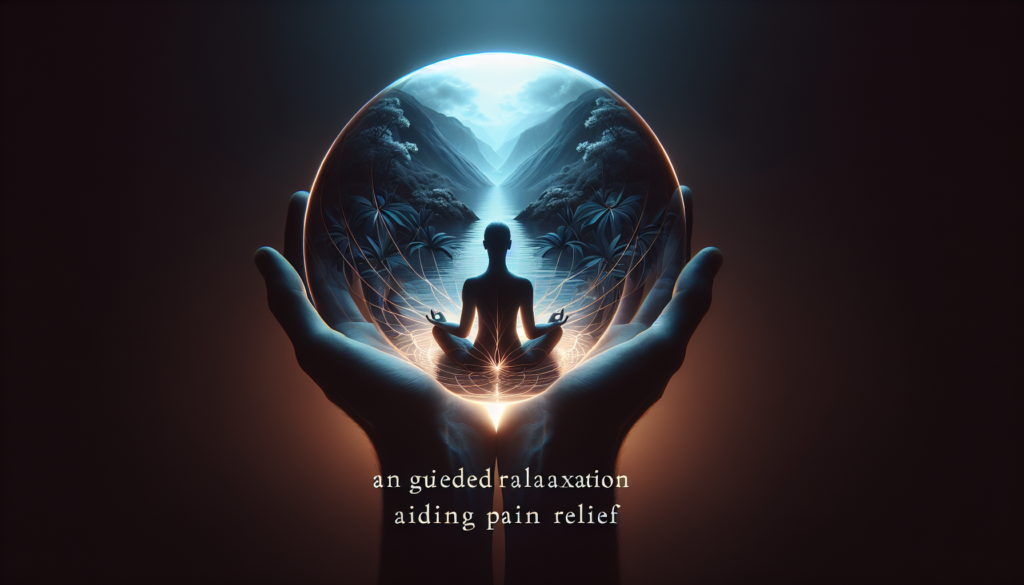Imagine being able to effectively alleviate your pain simply by engaging in guided relaxation. In this article, we explore the remarkable impact that guided relaxation can have on pain relief. By delving into the research and studies conducted on this subject, we aim to uncover the potential benefits and mechanisms of this practice. From reducing physical discomfort to improving mental well-being, discover how guided relaxation can be a soothing remedy for your pain.
Benefits of Guided Relaxation
Reduced Sensation of Pain
Guided relaxation techniques can help reduce the sensation of pain by promoting a state of deep relaxation. When you engage in guided relaxation, your mind and body enter a state of calmness, which can help alleviate the intensity of pain signals. By focusing your attention on relaxation exercises, you may find that you are able to divert your attention away from the pain sensation, leading to a decrease in overall discomfort.
Decreased Perception of Pain Severity
In addition to reducing the sensation of pain, guided relaxation can also help decrease your perception of pain severity. When you are relaxed and in a state of mental clarity, you may find that you are better able to cope with pain and view it in a more manageable light. By altering your perception of pain severity, guided relaxation can contribute to an overall reduction in the emotional and physical distress caused by pain.
Improved Pain Coping Abilities
Guided relaxation techniques can enhance your ability to cope with pain. By engaging in relaxation exercises, you develop skills and strategies to manage pain more effectively. These techniques can include breathing exercises, progressive muscle relaxation, and guided imagery. With regular practice, guided relaxation can empower you with a sense of control over your pain, allowing you to better cope and navigate through challenging moments.
Enhanced Quality of Sleep
One of the significant benefits of guided relaxation is its positive impact on improving sleep quality. Pain can often disrupt sleep, leading to a cycle of increased pain sensitivity and decreased ability to manage pain effectively. However, guided relaxation can help induce a deep state of relaxation, which in turn promotes better sleep. With better quality sleep, your body is better equipped to heal and recover, leading to reduced pain levels and improved overall well-being.
Mechanisms of Action
Activation of the Relaxation Response
Guided relaxation works by activating the body’s relaxation response. This response triggers a series of physiological changes that counteract the stress response, bringing about a state of mental and physical calmness. During guided relaxation, you are guided through a series of relaxation techniques such as deep breathing, muscle relaxation, and visualization, which help activate the body’s relaxation response. By consistently practicing guided relaxation, you can train your body to respond to stressful situations with greater ease and relaxation, ultimately reducing pain and promoting well-being.
Distraction from Pain
Another mechanism of action of guided relaxation is distraction from pain. Engaging in guided relaxation exercises can divert your attention away from the pain sensation and redirect it towards a pleasurable and relaxing experience. By shifting your focus to the guided instructions or imagery, you create a temporary reprieve from the pain and allow your mind and body to experience a different state of calmness and tranquility.
Promotion of Deep Breathing
Guided relaxation often incorporates deep breathing exercises, which have profound effects on pain relief. Deep breathing activates the body’s parasympathetic nervous system, also known as the relaxation response. This response counteracts the stress response associated with pain, promoting relaxation, and reducing pain perception. By focusing on your breath during guided relaxation, you engage in a rhythmic and intentional breathing pattern that can help calm both your mind and body, leading to decreased pain sensitivity.

Neurological Processes
Release of Endorphins
Guided relaxation can trigger the release of endorphins, the body’s natural pain-killing hormones. Endorphins have an analgesic effect, meaning they can help reduce the perception of pain. During guided relaxation, the body enters a relaxed state, which promotes the release of these endorphins. As a result, the sensation of pain is diminished, and a sense of well-being and euphoria may be experienced. The release of endorphins through guided relaxation offers a natural and holistic approach to pain relief.
Modulation of Pain Pathways in the Brain
Guided relaxation techniques have been shown to modulate pain pathways in the brain. Research has indicated that engaging in relaxation exercises can lead to changes in brain activity and neural circuits involved in pain perception. By modulating these pain pathways, guided relaxation can help reduce the intensity of pain signals that reach the brain, leading to a decrease in pain perception. This modulation of pain pathways is an essential mechanism through which guided relaxation can provide pain relief and improve overall well-being.
Physiological Effects
Lowered Heart Rate
Engaging in guided relaxation can result in a lowered heart rate. During moments of stress or pain, the heart rate typically increases as a response to the body’s fight-or-flight reaction. However, through guided relaxation, the body enters a state of deep relaxation, leading to a decrease in heart rate. This reduction in heart rate promotes a sense of calmness and relaxation, contributing to pain relief and improved overall well-being.
Reduced Muscle Tension
One of the physiological effects of guided relaxation is the reduction of muscle tension. Pain often leads to muscle tension and stiffness, which can exacerbate discomfort. However, by practicing relaxation techniques such as progressive muscle relaxation, guided imagery, and mindfulness meditation, guided relaxation can help release muscle tension. As tension is released, pain is often alleviated, allowing for greater ease of movement, decreased pain levels, and enhanced overall physical well-being.
Stabilized Blood Pressure
Guided relaxation exercises have been found to stabilize blood pressure. When the body is in a state of stress or pain, blood pressure tends to increase due to heightened physiological responses. However, guided relaxation promotes a state of relaxation, which can help regulate blood pressure. By stabilizing blood pressure, guided relaxation supports cardiovascular health and contributes to an overall sense of well-being.

Psychological Factors
Reduced Anxiety and Stress
Guided relaxation is known for its ability to reduce anxiety and stress levels. Anxiety and stress often accompany pain and can intensify the perception of pain severity. However, through guided relaxation techniques, the mind and body enter a state of calmness and tranquility, significantly reducing anxiety and stress. This reduction in anxiety and stress not only contributes to pain relief but also promotes a sense of emotional well-being and improved overall quality of life.
Improved Mood and Emotional Well-being
Engaging in guided relaxation can lead to improved mood and emotional well-being. Pain can often have a significant impact on one’s emotional state, leading to feelings of frustration, sadness, and irritability. However, guided relaxation can help alleviate these negative emotions and promote a more positive mindset. By decreasing pain levels and reducing anxiety, guided relaxation creates space for a more balanced, positive emotional state, fostering overall well-being and a greater sense of happiness.
Enhanced Sense of Control over Pain
One of the psychological benefits of guided relaxation is an enhanced sense of control over pain. Pain can often make individuals feel helpless and out of control. However, by regularly practicing guided relaxation techniques, individuals can develop a greater sense of control over their pain experiences. Guided relaxation empowers individuals with the ability to actively manage their pain, leading to increased self-confidence, decreased feelings of helplessness, and improved overall psychological well-being.
Guided Relaxation Techniques
Progressive Muscle Relaxation
Progressive muscle relaxation involves tensing and then releasing different muscle groups in a systematic manner. By tensing the muscles and then deliberately releasing the tension, individuals can experience a deep state of relaxation and reduce muscle tension. This technique is often accompanied by deep breathing and can be practiced with the guidance of an audio recording or a trained professional.
Guided Imagery
Guided imagery involves utilizing the power of the imagination to create a mental image that promotes relaxation and pain relief. By vividly imagining a peaceful and serene environment or focusing on specific sensations or experiences, individuals can transport themselves to a calming mental space, reducing stress and promoting relaxation. Guided imagery can be practiced with the help of an audio recording or a trained professional.
Mindfulness Meditation
Mindfulness meditation involves focusing one’s attention on the present moment without judgment. By observing one’s thoughts, sensations, and emotions in a non-reactive manner, individuals can cultivate a sense of calmness and acceptance. Mindfulness meditation can be practiced with the guidance of a meditation instructor, through smartphone applications, or by participating in mindfulness-based stress reduction programs.
Breathing Exercises
Breathing exercises are an integral part of guided relaxation and can help promote relaxation, reduce anxiety, and alleviate pain. Techniques such as diaphragmatic breathing, box breathing, or 4-7-8 breathing can be practiced to engage the body’s relaxation response. Breathing exercises can be learned through instructional videos, guided audios, or with the assistance of a healthcare professional.

Effectiveness of Guided Relaxation Strategies
Research Studies and Findings
Numerous research studies have explored the effectiveness of guided relaxation in relieving pain. A study published in the Journal of Advanced Nursing found that guided relaxation significantly reduced pain intensity and improved well-being among cancer patients. Another study published in the Journal of Pain and Symptom Management showed that guided relaxation was effective in reducing pain intensity and increasing pain tolerance among individuals with chronic pain. These findings highlight the effectiveness of guided relaxation as a complementary approach for pain relief.
Patient Experiences and Testimonials
In addition to research findings, countless patients have shared their positive experiences with guided relaxation for pain relief. Many individuals report a significant reduction in pain levels, improved quality of life, and enhanced emotional well-being after incorporating guided relaxation into their pain management routine. Patient testimonials demonstrate the potential of guided relaxation to complement traditional treatments and provide holistic relief from pain.
Integration into Pain Management
Complementary Approach to Pre-existing Treatments
Guided relaxation can be integrated as a complementary approach to pre-existing pain management treatments. Whether used alongside medications, physical therapy, or other interventions, guided relaxation can enhance the overall effectiveness of pain management strategies. By incorporating guided relaxation into a comprehensive treatment plan, individuals can experience a multidimensional approach to pain relief and improve their overall well-being.
Application in Acute and Chronic Pain Conditions
Guided relaxation can be applied to both acute and chronic pain conditions. Whether experiencing temporary pain due to injury, surgery, or medical procedures, or managing long-term pain associated with conditions such as arthritis or fibromyalgia, guided relaxation techniques can provide relief and support overall pain management efforts. Individuals can adapt these techniques to suit their specific needs and integrate them into their daily routine to manage pain effectively.

Best Practices for Guided Relaxation
Choosing the Right Guided Relaxation Program
When incorporating guided relaxation into your pain management routine, it is essential to choose a program that suits your specific needs and preferences. There are various resources available, including audio recordings, smartphone applications, and guided relaxation classes. Take the time to explore different options and select a program that resonates with you.
Establishing a Regular Practice
Consistency is key when it comes to guided relaxation. To reap the benefits, aim to establish a regular practice by setting aside dedicated time each day or week for relaxation exercises. Consistency will help you cultivate relaxation skills, improve your ability to cope with pain, and experience the long-term benefits of guided relaxation.
Creating a Relaxing Environment
Creating a relaxing environment can enhance your guided relaxation experience. Find a quiet and comfortable space where you can practice without distractions. Dim lighting, soft music, and comfortable seating can all contribute to a calming ambiance that promotes a deeper level of relaxation. Experiment with different sensory elements to create an environment that works best for you.
Conclusion
Guided relaxation offers promising potential for pain relief and an overall holistic approach to improving well-being. By engaging in guided relaxation techniques, you can experience reduced pain sensation, improved pain coping abilities, and enhanced quality of sleep. Through the activation of the relaxation response, distraction from pain, and promotion of deep breathing, guided relaxation works on neurological processes to modulate pain pathways in the brain.
Physiological effects such as lowered heart rate, reduced muscle tension, and stabilized blood pressure contribute to pain relief. Psychological factors such as reduced anxiety and stress, improved mood and emotional well-being, and an enhanced sense of control over pain further contribute to a comprehensive pain management approach. Guided relaxation techniques, including progressive muscle relaxation, guided imagery, mindfulness meditation, and breathing exercises, can be practiced to attain these benefits.
The effectiveness of guided relaxation is supported by research studies and patient testimonials, highlighting its value as a complementary approach to pre-existing treatments. Guided relaxation can be integrated into pain management strategies for both acute and chronic pain conditions, offering relief and support. By following best practices, including choosing the right program, establishing a regular practice, and creating a relaxing environment, individuals can maximize the benefits of guided relaxation and enhance their overall well-being.

